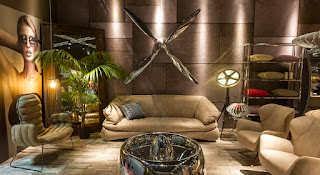Cilento: Ancient, artisanal and authentic
By Mariella Radaelli and Jon Van Housen
LuminosityItalia
Compared to the Amalfi Coast, its bustling neighbor in Italy's province of Salerno, Cilento might seem like land that time forgot.
Long stretches of its beaches remain untouched by mass tourism and a time-honored way of life continues in its countryside, where medieval borghi largely stand in their original state and small agricultural operations hand make sublime artisanal products.
But it is certainly a land remembered in the long sweep of history and myth. It is where Palinuro fell in love with the cold-hearted nymph Kamaratòn, where some of the best temples of Magna Graecia were built and remain, and in much more modern times, where the Allies first invaded mainland Europe in WWII and created their own legends with the names of Cilento’s hamlets and villages attached.
LuminosityItalia
Compared to the Amalfi Coast, its bustling neighbor in Italy's province of Salerno, Cilento might seem like land that time forgot.
Long stretches of its beaches remain untouched by mass tourism and a time-honored way of life continues in its countryside, where medieval borghi largely stand in their original state and small agricultural operations hand make sublime artisanal products.
But it is certainly a land remembered in the long sweep of history and myth. It is where Palinuro fell in love with the cold-hearted nymph Kamaratòn, where some of the best temples of Magna Graecia were built and remain, and in much more modern times, where the Allies first invaded mainland Europe in WWII and created their own legends with the names of Cilento’s hamlets and villages attached.
 |
| Blue-on-blue beauty of sea and sky in Palinuro. |
And that underdeveloped state could be its greatest asset. Home to Blue Flag – or entirely pristine – seas and Italy’s second-largest national park, the region with 90 municipalities offers azure waters and sky, cascading streams, deep ravines and towering peaks. Peregrine falcons fly overhead, and wild foxes and boars still roam its interior.
Paestum is Cilento's most impressive archeological site. Honored by Goethe and Shelley for its magnificent Greek temples and long sandy beach, it was founded by the Greeks as Poseidon in the 7th century BC and colonized by the Romans in 273 BC.
On our way to the dazzling site, we stopped at Masseria Lupata, where Raffaele Barlotti produces the best mozzarella di bufala in town. We bought Raffaele’s house-made products and sat down for a short break to savor his delicately mild and sweet mozzarella while admiring a spectacular view of the ancient city.
Paestum is Cilento's most impressive archeological site. Honored by Goethe and Shelley for its magnificent Greek temples and long sandy beach, it was founded by the Greeks as Poseidon in the 7th century BC and colonized by the Romans in 273 BC.
On our way to the dazzling site, we stopped at Masseria Lupata, where Raffaele Barlotti produces the best mozzarella di bufala in town. We bought Raffaele’s house-made products and sat down for a short break to savor his delicately mild and sweet mozzarella while admiring a spectacular view of the ancient city.
 |
Paestum: An important site in Magna Graecia.
|
Masseria Lupata on the Strada Degli Argonauti is in an atmospheric spot built in 1670 inside the ancient walls for the King of the Two Sicilies, just 10 meters from Porta Marina, the main gateway on the Paestum seaside.
The rest of this story published on Oct. 13 in the print and online editions of the national L'Italo-Americano newspaper based in Monrovia, California is available here (pdf).



Comments
Post a Comment